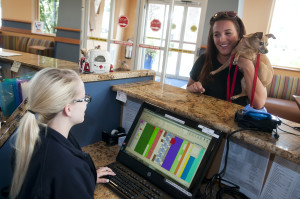-
Recent Posts
Archives
- October 2022
- August 2022
- May 2022
- March 2022
- January 2022
- December 2021
- September 2021
- July 2021
- June 2021
- May 2021
- April 2021
- February 2021
- January 2021
- November 2020
- October 2020
- September 2020
- June 2020
- April 2020
- March 2020
- February 2020
- January 2020
- December 2019
- November 2019
- October 2019
- September 2019
- June 2019
- March 2019
- February 2019
- January 2019
- December 2018
- November 2018
- October 2018
- August 2018
- July 2018
- June 2018
- May 2018
- April 2018
- March 2018
- February 2018
- January 2018
- December 2017
- November 2017
- October 2017
- September 2017
- August 2017
- July 2017
- June 2017
- May 2017
- April 2017
- March 2017
- February 2017
- January 2017
- December 2016
- November 2016
- August 2016
- July 2016
- June 2016
- May 2016
- April 2016
- March 2016
- February 2016
- January 2016
- December 2015
- November 2015
- October 2015
- September 2015
- August 2015
- July 2015
- June 2015
- May 2015
- April 2015
- March 2015
- December 2014
- June 2014
- May 2014
- April 2014
- November 2013
- September 2013
- August 2013
- July 2013
- June 2013
- May 2013
- March 2013
- January 2013
- November 2012
- October 2012
- July 2012
- December 2011
- November 2011
- October 2011
- September 2011
- August 2011
- July 2011
- June 2011
- May 2011
- April 2011
- March 2011
- February 2011
- January 2011
- December 2010
- November 2010
Categories
3 Ways to Ensure a Safe Veterinary Waiting Room Experience
My Oncology team and I have more than thirty years combined working in veterinary hospitals. Over the years, we have seen many different interactions in the waiting room. These are the top three things you can do to ensure a safe experience for everyone while you wait to be seen.

- Make sure children understand how to interact with other people’s pets
Most pets in the NorthStar VETS lobby are either sick or painful. It is best to not to interact with other people’s pets without permission. Encourage children to ask permission before interacting with a pet, and help them understand that a sick/hurting/scared animal may not want to be pet.This applies to your four-legged children as well. Dogs naturally want to sniff or play with other animals in the waiting room, but you don’t always know why other owners have their pets in the hospital. If those pets are sick, they may not want to play.
- Avoid retractable dog leashes
Many clients like retractable leashes, but they do come with risks. With a retractable leash, dogs can be more difficult to control, may not understand their boundaries, and the leash has the potential to snap due to wear over time. It also tempts dogs to greet other dogs in the waiting room. Read Dr. Marty Becker’s post on the top 10 risks of retractable leashes - Use a carrier for smaller pets
If you own a cat, bird or other small animal, please keep them in a carrier. Some dogs have a strong prey drive, and may take an unwelcome interest in your pet. And having smaller pets in a carrier makes it easier to get them into the hospital and into and out of the exam room.This is another important tip. If your pet requires a muzzle, allow your veterinary professional to place it on your pet. Many of us are very skilled at understanding the scared or hurt pet that might be potentially reactive. In most cases, we are able to gently restrain a pet without the aid of our clients.
Our top priorities are the pet, their well-being and safety for everyone.
 Jennifer Kim, DVM, DACVIM (Oncology)
Jennifer Kim, DVM, DACVIM (Oncology)
Dr. Kim grew up in New York and received her BA from the University of Pennsylvania. After two years at the National Cancer Institute performing cancer genetic research, she attended veterinary school at Tufts University. Dr. Kim completed a rotating internship at the Animal Medical Center in Manhattan, New York, and an oncology internship at Cornell University. She began at NorthStar VETS as an emergency clinician in 2005 and returned in 2010 to treat oncology patients after completing her residency in medical oncology at Michigan State University School of Veterinary Medicine. In her free time, Dr. Kim is an avid foodie and knitter.
This entry was posted in Pets, Veterinary Medicine and tagged Jennifer Kim, NorthStar VETS, pet safety, veterinary waiting room. Bookmark the permalink.





Leave a Reply